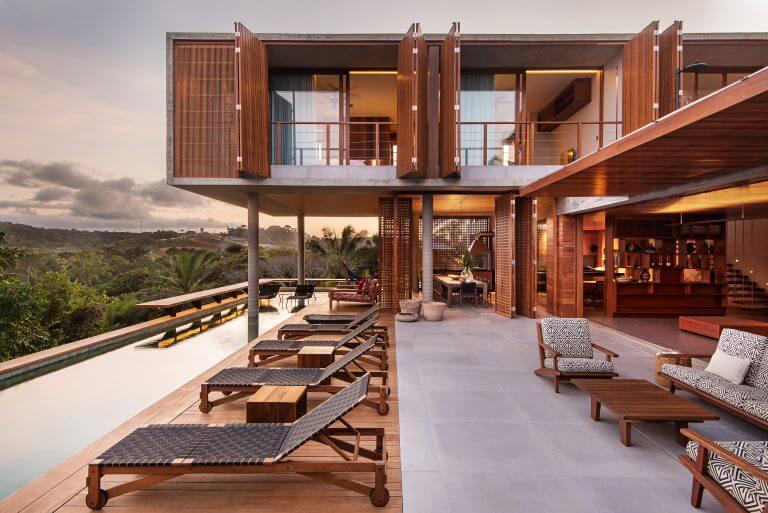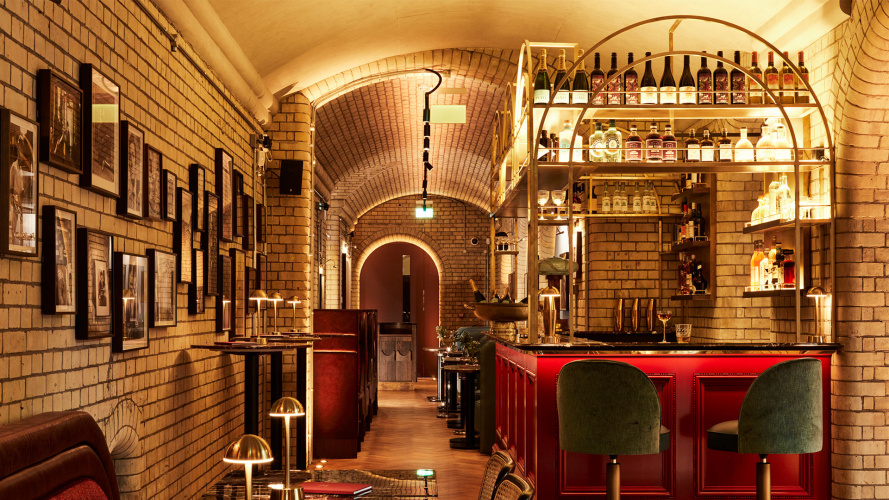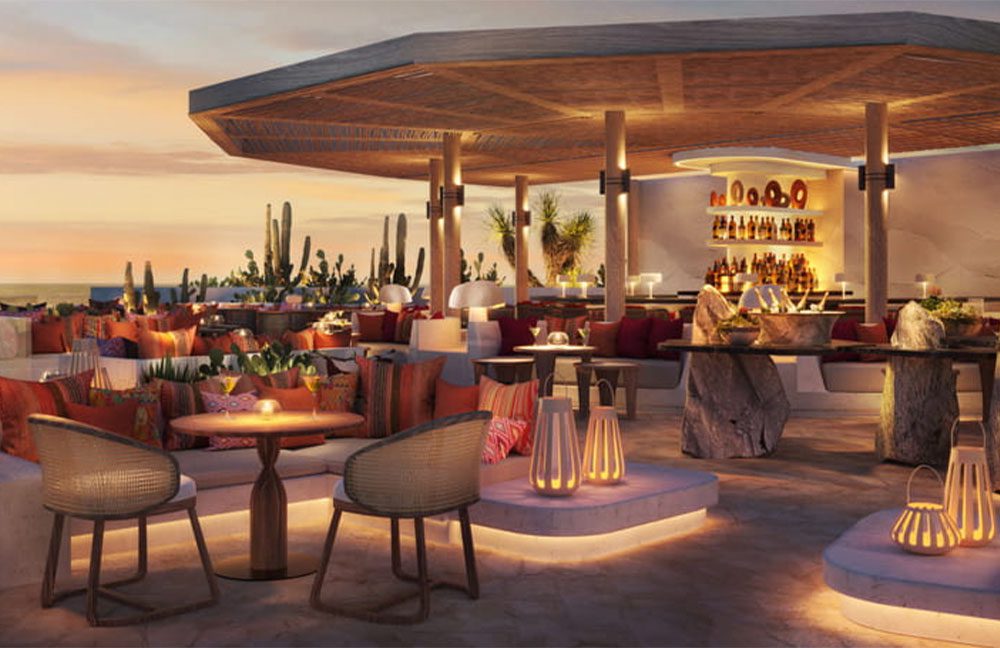The luxury interior design industry is continuously evolving, and as we look ahead to 2024, several key trends are emerging that will define high-end spaces in hotels and restaurants. From sustainable materials to bold colors, these trends reflect the growing demand for unique, memorable experiences and more eco-conscious design approaches. In this article, we’ll explore the top luxury interior design trends for the coming year, providing insights that hotel owners, restaurateurs, and designers can leverage to elevate their projects.
Bold Color Palettes That Make a Statement
One of the most noticeable shifts in 2024 luxury design will be the use of bold color palettes. While neutral tones like grey, beige, and cream have dominated for years, designers are now moving towards more daring, saturated hues. These bold colors serve as focal points, adding drama and personality to a space without overwhelming it.
Key color trends for 2024 include:
- Emerald Green: This rich, deep color is set to become a popular choice for luxury interiors. It exudes a sense of opulence and is often used in upscale spaces to create a lush, inviting atmosphere. When paired with metallic accents, it enhances the sophistication of the overall design.
- Navy Blue: Timeless yet bold, navy blue is perfect for adding depth and contrast. It can be used on walls, upholstery, or even as an accent color for furnishings. Navy blue works well with other rich tones such as gold or copper, creating an elegant, classic look.
- Terracotta: Warm, earthy shades like terracotta bring a cozy, grounded feel to luxury interiors. This color is being used in high-end restaurants and boutique hotels to evoke a sense of warmth and intimacy, ideal for spaces where guests come to relax and unwind.
- Burnt Orange: This dynamic hue is perfect for creating a statement. Whether it’s used in smaller accents like cushions or in larger elements like wall coverings, burnt orange adds energy and vitality to luxury spaces without sacrificing elegance.
These color choices are moving away from the minimalist trends of the past and embracing maximalism, where bold design is celebrated.

Sustainable Materials in Design
Sustainability continues to be a major focus in luxury interior design, particularly in the hospitality sector. As consumers become more environmentally conscious, hotels and restaurants are increasingly looking for ways to minimize their carbon footprint without compromising on style or comfort.
In 2024, expect to see a greater emphasis on eco-friendly materials, such as:
- Reclaimed Wood: This sustainable material not only reduces the need for deforestation but also brings a rustic, timeless look to interior spaces. Its natural imperfections and weathered textures add character and warmth to luxury hotels and restaurants.
- Recycled Metal: Recycled metal is often used in luxury interiors to create sleek, modern accents. It’s both eco-friendly and visually striking, making it ideal for lighting fixtures, furniture, and decorative elements.
- Organic Fabrics: From upholstery to curtains, organic fabrics like cotton, linen, and wool are being used more frequently. These materials are free from harmful chemicals, making them a safer and more sustainable choice for high-end interiors.
- Bamboo: Known for its rapid growth and renewability, bamboo is a fantastic choice for sustainable flooring, furniture, and even wall coverings. Its versatility and natural beauty make it a popular option in eco-conscious luxury designs.
| Material | Benefits |
|---|---|
| Reclaimed Wood | Reduces deforestation |
| Recycled Metal | Lowers carbon footprint |
| Organic Cotton | Free from harmful pesticides |
| Bamboo | Renewable and fast-growing |
By incorporating these materials, luxury hotels and restaurants can demonstrate their commitment to sustainability while maintaining a high level of design sophistication.
Biophilic Design: Bringing Nature Indoors
Biophilic design — the practice of incorporating nature into interiors — has gained significant traction over the past few years, and it will continue to be a major trend in 2024. This design philosophy is particularly important in luxury settings, where guests are looking for calming, rejuvenating experiences.
Elements of biophilic design include:
- Indoor Gardens: Many luxury hotels are integrating indoor gardens or green walls into their public spaces. These installations not only enhance the aesthetic appeal of the space but also improve air quality and create a sense of tranquility.
- Natural Materials: Stone, wood, and plants are commonly used in biophilic design. These materials help to create a seamless transition between indoor and outdoor spaces, blurring the line between nature and architecture.
- Large Windows: Maximizing natural light is a key component of biophilic design. Hotels and restaurants with floor-to-ceiling windows offer guests breathtaking views of the surrounding landscape, enhancing their connection to nature even in urban environments.
The combination of natural materials, indoor greenery, and expansive windows can create a harmonious, peaceful atmosphere that appeals to guests seeking a retreat from the hustle and bustle of daily life.

Customization and Personalization
In an era where guests crave unique, tailored experiences, customization and personalization are becoming essential elements of luxury interior design. Hotels and restaurants are increasingly offering bespoke design solutions that reflect the individual preferences of their clients or customers.
For hotels, this could mean offering customizable room layouts, where guests can select their preferred color schemes, furniture arrangements, or even artwork. Restaurants might feature one-of-a-kind décor pieces, such as hand-painted murals or custom-designed lighting fixtures that add a personal touch to the dining experience.
Some examples of personalized elements in luxury design include:
- Custom Furniture: Made-to-order pieces that fit the specific dimensions and aesthetic of a space.
- Bespoke Lighting: Unique lighting solutions that highlight key features of the interior or create specific moods based on the time of day or event.
- Art Installations: Commissioning local or international artists to create exclusive works that reflect the brand or theme of the hotel or restaurant.
The goal is to create spaces that are not only luxurious but also personal, offering guests a tailored experience that leaves a lasting impression.
The Rise of Smart Technology
As technology becomes increasingly integrated into everyday life, luxury interior design is also evolving to include smart technology that enhances both the functionality and aesthetic appeal of a space. In 2024, smart technology will play a major role in luxury hotel and restaurant design, providing seamless, intuitive solutions that improve the guest experience.
Popular smart technologies in luxury interiors include:
- Smart Lighting Systems: Automated lighting that adjusts based on the time of day or the mood of the space. Guests can control the lighting from their smartphones, creating a personalized ambiance with ease.
- Voice-Controlled Devices: From adjusting room temperature to ordering room service, voice-controlled technology offers a hands-free, convenient way for guests to interact with their surroundings.
- Smart Mirrors: In luxury bathrooms, smart mirrors with built-in lighting and displays allow guests to check the weather, stream media, or control other smart devices from the comfort of their suite.
| Smart Technology | Benefits for Hotels and Restaurants |
|---|---|
| Smart Lighting | Customizable ambiance and energy efficiency |
| Voice-Controlled Devices | Hands-free convenience |
| Smart Thermostats | Personalized climate control |
These technological advancements are not only practical but also add a modern, high-tech element to luxury interiors that enhances the overall guest experience.
Looking Ahead: Setting New Standards in Luxury Design
As we look towards 2024, luxury interior design will continue to push boundaries, embracing bold colors, sustainable materials, and innovative technologies. Hotels and restaurants that incorporate these trends will create spaces that are not only visually stunning but also environmentally responsible and guest-centric.
Whether you’re developing a new luxury property or renovating an existing space, keeping these trends in mind will ensure that your design is both timeless and on the cutting edge of what today’s sophisticated guests expect.
